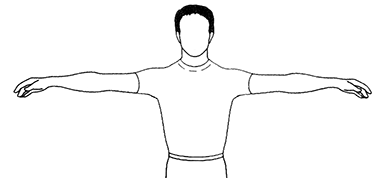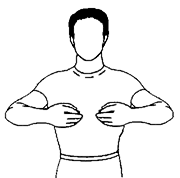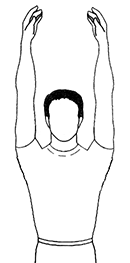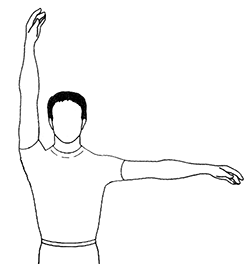3 Exercises For 2 Left Feet (Without Leaving Home)
We, at Talkin’ Body, often hear "I can’t dance because I have two left feet." Two Left Feet is a well-known saying that has become a staple of the English language, conjuring images of jerky, graceless, and otherwise awkward movement. More often than not it's used in a self-deprecating manner by those too shy or scared to put themselves out there on the dance floor. Despite the phrase's prevalence, anybody can be taught to dance. Certainly, there are varying levels of proficiency and not everyone is born with a Gene Kelly level of expertise. That level of dancing is not required or even desired to get the mental and physical health benefits of social dancing. At its core, dancing is synchronized walking. You have lived in this body your whole life and now you take movement, especially walking, for granted. You move your arms and legs now without seeing where they are in relationship to the rest of your body or to the room. Just as your brain needed to learn how to command your feet to walk when you were a baby, your brain can also learn how to move your feet to the rhythm of the music. All it takes is a little practice and knowing your left foot from your right. That being said, here are 3 things you can do at home to help you overcome your limiting belief of having "two left feet".
Stand in front of a full-length mirror and practice the following:
You may know that good posture is essential for good health. However, most people don’t practice healthy habits when it comes to their alignment. They don’t even think about it. Posture is the position in which we hold our bodies while standing, sitting, or lying down. Good posture is the correct alignment of body parts supported by the right amount of muscle tension against gravity. In addition to being an important part of your spinal health, proper posture will help your dance ability in more ways than you can imagine.
- Keep your feet about shoulder-width apart.
- Bear your weight primarily on the balls of your feet, not on your heels.
- Stand straight and tall with your shoulders pulled backward.
- Keep your knees slightly bent. Avoid locking the knees.
- Let your arms hang naturally down the sides of the body.
- Tuck your pelvis slightly under you while pulling in your stomach.
- Keep your head level and look straight ahead.
- Be sure the head is square on top of the spine, not pushed out forward.

When you walk, you transfer weight from your right foot to your left foot and back again without giving it a thought. In dancing, we change our weight relatively quickly just like walking. The difference is that we also change direction. To get your mind prepared to move your feet for dancing, think about walking again so you can feel it in dancing.
In this exercise, walk forward very slowly
- Feel the transfer of weight between your left and right feet.
- Feel where your hips are between when you put one foot in front and when you actually put weight on it. Your hips and your body are actually on top of the foot that is bearing weight.
- Once you can feel that on both your right and left side, try walking backward. Notice how your toe touches behind you before you actually step on that foot.
- Stand on one foot and keep your balance. Feel where your weight shifts to keep you from falling over.

You use your arms for many things in the course of a day. Opening doors, picking up an object or turning on a faucet all require you to move your arms which maneuvers your hands. However, not many things in everyday life require you to fully extend your arms above your head or to your side. Extending your arms and feeling where they are in relationship to your body is not a tricky dance move with a fancy name like pirouette but doing this will certainly make you look like a dance master. Stand in front of a mirror and practice your TOIL while maintaining proper posture.
 |
 |
|
 |
 |
|
 |
 |
|
 |
 |
|

